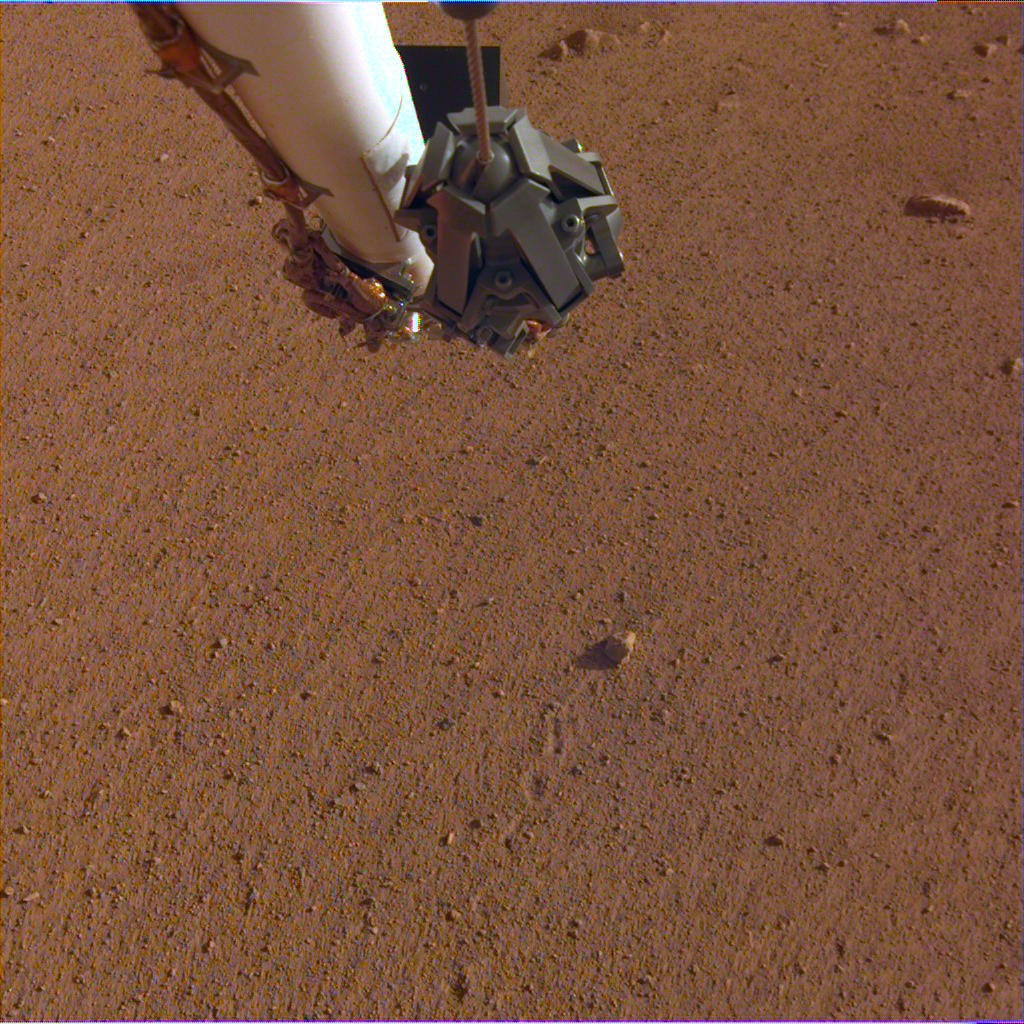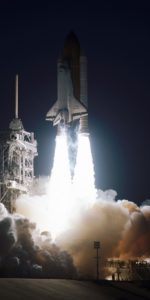
Mars is usually thought of as pretty much a dead world, geologically-speaking. But NASA’s InSight lander is finding that may not be exactly true. Some early results from InSight’s investigations of the planet’s interior have shown evidence for an oddly pulsating magnetic field, a more magnetic crust than expected and, maybe, the existence of a global reservoir of subsurface water.
The intriguing results were presented last week at a joint meeting of the European Planetary Science Congress and the American Astronomical Society.
“We’re getting an insight into Mars’s magnetic history in a way we’ve never had before,” said Paul Byrne, a planetary geologist at North Carolina State University.
InSight found that Mars’ crustal magnetic field “pulsates” or wobbles sometimes. This happens on Earth as well, and can be caused by turbulence in the upper atmospheric, solar wind and kinks in the planet’s magnetic bubbles, among other things. But on Mars, the wobbles seem to happen at midnight for some unknown reason.
One possibility has to do with Mars’ bubble-like global magnetic field. Although it is much weaker than Earth’s, it still interacts with the solar wind coming from the Sun. Part of the bubble forms a tail-like shape. InSight’s location of Mars is aligned with this tail at midnight, and scientists think that the tail may “pluck” the local magnetic field at that moment, kind of like a guitar string.


Another finding has to do with Mars’ crustal magnetic field itself. Data from InSight showed that the magnetic field in its location was about 20 times stronger than had been expected, based on previous measurements from orbit.
The mission team knows the strong magnetic field detection is coming from rocks near the lander, but whether those rocks are near the surface or deeper underground isn’t known yet. It would be particularly interesting if it was younger rocks closer to the surface, since that would suggest that Mars’ once-stronger magnetic field laster longer than thought.
Mars used to have a much stronger magnetic field, more like Earth’s, but it is thought to have mostly collapsed about four billion years ago, due to the planet’s outer core seizing up. Geological records of that previous magnetic field can still be found in the martian crust.
“The same zoo of magnetic minerals that exist on Earth exist on Mars,” said Robert Lillis, a planetary space physicist at the University of California, Berkeley.
This would help explain why Mars, which once had vast amounts of liquid water, became the dry, cold desert world we see today. With little magnetic field left, radiation from the Sun stripped away most of the atmosphere.


The third major finding so far may be the most tantalizing of all: possible evidence of a global layer of groundwater.
InSight found what appears to be an electrically conductive layer – as would be expected with water or water-rich soil – below the surface. It could be an aquifer or a water/ice layer that stretches around the planet. It isn’t known yet how deep it is, but scientists involved estimate a maximum of 62 miles.
It is already known that there is extensive subsurface ice on Mars, and last year it was announced that the Mars Express orbiter had found evidence of a subsurface lake near the south pole.
The presence of such underground lakes, and larger, global aquifers/groundwater (if confirmed) increase the chances of some kind of microbial life existing on Mars today. But we don’t know for sure yet.
It’s a very promising place to look for life on Mars,” said Roberto Orosei, a planetary scientist at the National Institute of Astrophysics in Bologna, Italy. “But we do not know for sure if it is inhabited.”
We also know that Mars used to have much more water on its surface a few billion years ago. Rivers, lakes and maybe even a large ocean in the northern hemisphere. So it may not be too surprising to learn that there is still water today, but underground where it is warmer and protected.

Further studies and/or missions will be needed to confirm this watery layer (or not), and if anything could be living in it, but it is an exciting tentative discovery by InSight.
Unlike rovers and other landers, the InSight mission focuses on studying the interior of Mars, looking for evidence of possible geological activity below the surface for clues as to how active Mars is today and how the planet evolved.
InSight was launched on May 5, 2018, on a United Launch Alliance Atlas V “401” rocket from Vandenberg AFB, California.
More information about InSight is available on the mission website.
.
.
FOLLOW AmericaSpace on Facebook and Twitter!
.
.






InSight has truly been insightful! We are beginning to “peel back the layers” of Mars and more discoveries await us.
please view my website showing the intelligent geometric position of the volcanoes of Mars, revealing a simple geometric pattern that divides the planet’s circumference into 5 equal part. Note the giant canyon Valle Marineris, and it’s south edge orientated at 15 degrees, pointing to a geometrically shaped mountain. And this is just the start of it, go to mathematical-signs-of-god.com and see it all, for free.